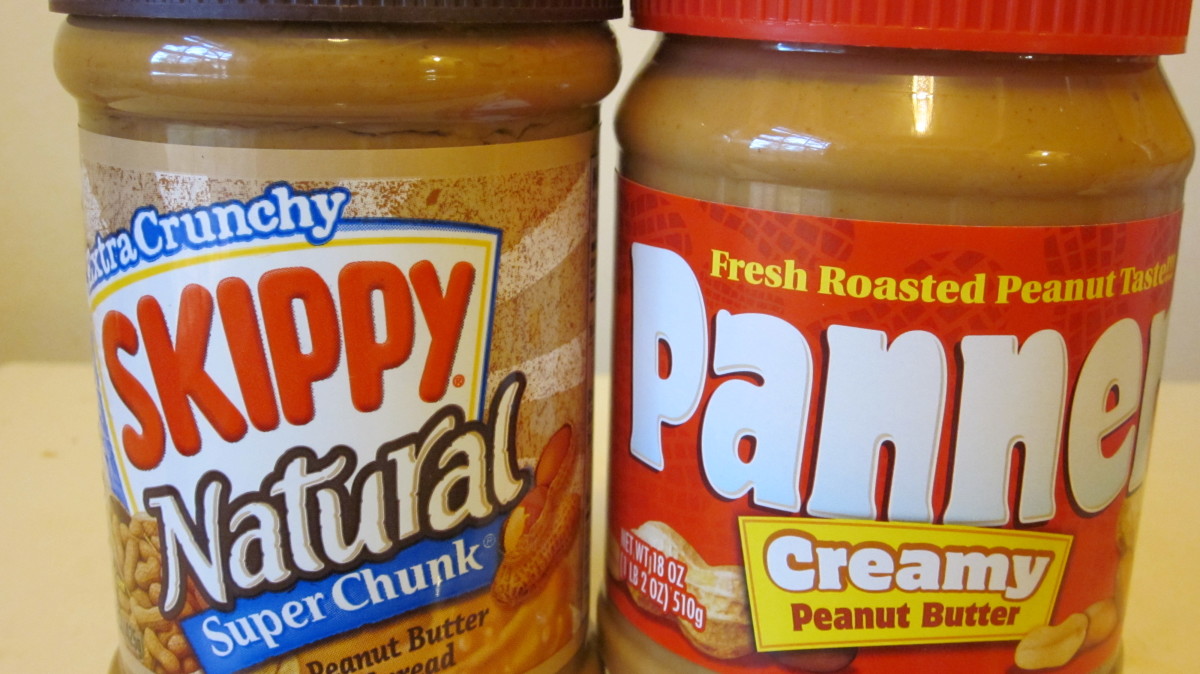The Role of Brand Names and Logos in our Consumer Driven Society
Very few would deny that 21st century America is a consumer-driven society. We live to shop. But what drives us to buy the particular items we end up purchasing? When walking down the aisle in a store, which products catch the eye? Are they the ones with recognizable brand names, or the ones with unfamiliar logos? Brand names are pervasive among products marketed for sale in the United States, and they influence people’s decisions as to which products are right for them. , ,. Uniform standards of quality and time-saving convenience have fueled the rise of brand names in American society, but the potential to impress is the most important factor influencing consumer decisions to buy brand name products.
Brandscan be a shorthand for a standard of quality that is uniform so consumers know what to expect . The first brand on the market in a particular category often sets that standard in the consumer’s mind. Some brands become so well known and respected that they are often used to name the generic product. This concept is called genericization (The Branding of America). An example of this phenomenon is Kleenex. When referring to a facial tissue, many Americans will just say Kleenex. Kleenex invented the facial tissue in 1924 (Kleenex), and since it was the first brand consumers associated with this product, the brand name quickly took over as the preferred way to identify the item. Another example of this is Band-Aid, which is often used at a common term for all adhesive bandages. The company first released its product in 1920 (History of Innovation). Like Kleenex, the brand that was the first on the market became the generic name for all products of that nature. Being the first brand gives the product status all brands would hope to achieve when the brand name becomes synonymous in the consumers’ minds with the product.
The first brand name on the market is often likely to attain continuing market success. But not everyone can be first, and companies often must work hard for the name of their product to be recognized and associated with quality. Molly Wade McGrath writes “Jell-o is one of the few top sellers around today that was not an instant winner when it first came on the market in 1895” (McGrath 28). By 1906 it was being called “America’s most famous dessert” (McGrath 29). Brand names have particular importance to consumers in the food industry. Consumers are hit with a barrage of commercials and advertisements promoting various products and restaurants seeking their business. Fast food places compete fiercely to be a more favored brand. If someone is hungry and they see a Wendy’s and a McDonald’s right next to each other, which one will they choose? Consumers will often choose based on their preference for a particular brand and their associated perception of its quality. .
The perceived quality of a brand name product is promoted to the public through advertising. Advertising is the tool that builds brands (Hine 198). Better-known brands are often associated with larger corporations and have more capital than smaller regional brands. This means that these are the brands we see being advertised more frequently. Large corporations have more money available to put into advertisement in hopes of increasing their popularity. Hine states that “Advertising helps create insecurity by convincing its targets that there is something missing in their lives that only the product being offered can satisfy” (Hine 90). Advertising is the primary way that we are exposed to the brand names that surround us and we learn about product quality.
While a brand name can merely signify the product was the first on the scene or is backed by millions in advertisements, brand names can also be a true indication of quality. When it comes to something like purchasing a guitar, a brand can often be a good indication of the quality of the instrument. For example, a brand of guitar that not many people have heard of before may or may not be a decent guitar, but with a Martin you can know their reputation and feel fairly confident that you are looking at a guitar of excellent quality. The brand name of a good item can often help the consumer to judge the quality of that good.
Familiar brand names can help shoppers save time in making purchases. Brand name loyalty and associated perceptions of quality extends to other aspects of the food industry. Prepackaged foods are similar to other foods when it comes to brand names. When people are in a grocery store, they might want to buy some cookies; they might choose Nabisco, Keebler, or yet another. What makes the box of Nilla Wafers seem more appealing than the store brand, Vanilla Wafers? It is a mental thing: maybe the picture on the box looks better, and maybe it is expected to taste better because it is the name brand. In a study of corn chips, researchers found corn chips with the brand name Tostitos to be strongly preferred to chips with no brand name, no matter where the chips were purchased or whether or not the chips were manufactured with genetically engineered corn (Lusk, Moore, House, and Morrow 5). Consumers may be reluctant to take the risk of buying an unfamiliar brand. Researcher Stephen Miller found that “extremely unfamiliar words or objects tend to be evaluated negatively” (Miller). The convenience of buying a familiar brand may influence a consumer when it comes to purchasing an item.
Beyond quality and convenience, brands can help convey status to aid in impressing others. Marketing of clothing is an area where brand is of high importance. Consumers have such a wide range of clothing to choose from, brand names play a significant role in their purchasing choices. Consumer “familiarity with a novel object is closely linked to affect toward the object” (Miller). Brand names are apparent in clothing areas of baby clothes, sportswear, or suit coats. With brands such as Baby Gap, it can be seen the importance some people place on brands, even when it comes to their young children. Writer Naomi Klein points out that "Labels like Baby Gap and Gap Newborn imprint brand awareness on toddlers and turn babies into mini-billboards” (Klein 27). Nike Running shoes and Armani suits seem so far apart, yet are related by the fact that both are well established name brands and are well respected in their areas. The importance of brand names in clothing goes beyond their role in consumers’ food purchasing choice; the importance of brand names is more than merely personal preference. Popular culture expert Thomas Hine notes that “Designer labels are not really about design, they are about branding” (Hine 198). Clothing is visible to everyone, so it is more likely someone will notice another person’s brands and judge how well known or possibly how expensive that particular brand is. Unlike brands in food products, brand names in clothing can convey a perception of quality and status to others.
Consumers can use brands on clothing to convey more than the status or quality associated with a particular clothing manufacturer. Clothing can also be a way to show ones support for something. An example is sports teams. College and professional sports teams use the name of their institution or team as a brand name, and have logos that people can recognize as well as Nike or Adidas. Brands representing schools or sports teams are just as prevalent in American society as brands of other natures.
Even more than clothing, cars are a consumer item where the brand has an important influence on consumer perceptions and buying habits, especially when the goal is to impress others. The difference can be easily noticed when someone drives a Bentley versus when someone drives a Honda. The Bentley cost several times what the Honda did, and that is the image it gives. Automobiles are used by consumers to convey a more accurate indication of status than other consumer products like clothing. Clothing is limited in its potential to convey legitimate status, because even expensive clothing does not cost so much that a very large number are prohibited from buying a designer label if they truly wanted to. Automobiles, on the other hand, are such a significant financial investment, one can easily see a fairly good indication of a person’s social status by the brand of the car they drive. The more money people have, the more likely they are to purchase an expensive brand of car advertising their social standing. Brands can be used to impress, and large expensive items such as cars are especially useful for that purpose.
Consumers will often pay a premium price for a particular brand, if they perceive the item conveys an image of status. A brand name can often raise the price of a consumer item, regardless of actual quality. Brand names do not always represent quality; sometimes it is just a measure of the popularity of an item. Ipod is the most well known mp3 player by far; however, many brands manufacture similar products with a similar level of quality. The ipod’s marketing advantage and higher sales do not necessarily mean that the ipod is far superior to other products. Rather, the more likely answer is just that ipod is the familiar and fashionable one, and so it is the one consumers choose. The popularity of certain products is often associated with how well known their brand name is and the perception of status or popularity associated with that brand.
While some brands have a long tradition of being well known to fuel their popularity, other brands use their novelty when first introduced to have an impact on consumers. Klein notes that “successful corporations must primarily produce brands, as opposed to products” (Klein 1). When a brand first comes on the market, consumers are excited by this and want to be able to experience the new brand for themselves. However, consumers feel comfortable with what seems familiar, so if the name of the brand is something that is too unfamiliar, it may be viewed negatively by consumers until the product gains more popularity. Companies often choose to name their products with a name strange to the consumer so that they do not relate it with any other products (Miller). The name of a product can have quite an impact on how it is viewed by consumers.
Some consumers attach more importance to brand names than others do. Some individuals care more about what message they are sending other people by the brands of the goods they own or use. To others this is not as important and so the difference between various brands does not play as significant a role in their purchasing decisions. Sometimes the item in question has a bigger influence on the brand’s importance than the person’s overall outlook. Scott Marden, who directs marketing research at Vertis, an advertising company (Vertis), says, “In general shopping experience…men and women care about brand equally” (Blackwell). Brands’ influence on shoppers’ purchasing habits varies with what importance the consumer puts on impressing others.
Perceived quality, convenience, and the desire to impress have increased the importance of brand names in consumer purchases. Brands are found in everything that can be bought and sold. They influence the purchasing decisions of consumers’ decisions every day. Brand names are taken for granted because people are so used to them, but without them, the world would not be what it is today.
Cited Sources
Blackwell, Laura. “Brand Name Influence for Consumer Electronics Losing Luster.” 2007. PCWorld. 19 September 2007 http://pcworld.about.com/news/Jul112006id126377.htm.
Hine, Thomas. I Want That!: How We All Became Shoppers. New York: Harper Collins, 2002.
“History of Innovation.” 2007. Johnson & Johnson Consumer Companies Inc. 16 September 2007 http://www.band-aid.com/history.do.
“Kleenex History.” 2006. KCWW. 16 September 2007 http://www.kleenex.com/USA/history/index.aspx.
Klein, Naomi. No Logo: Taking Aim at the Brand Bullies. New York: Picador Books, 2000.
Lusk, Jayson L., Melissa Moore, Lisa O. House, and Bert Morrow. “Influence of Brand Name, Store Loyalty, and Type of Modification on Consumer Acceptance of Genetically Engineered Corn Chips.” Mississippi State University. 2001. 16 September 2007. http://www.ifama.org/conferences/2001Conference/Papers/Area%20II/Lusk_Jayson.PDF
McGrath, Molly Wade. Top Sellers, U.S.A.: Success Stories Behind America’s Best-Selling
Products from Alka-Seltzer to Zippo. New York: William Morrow and Company, 1983.
Miller, Stephen. “The Influence of Brand Ambiguity on Brand Attitude Development.” 2007. Journal of Marketing Research. 19 September 2007 http://www.jstor.org/view/00222437/sp040032/04x0959w/0.
“The Branding of America.” 2006. The Learning Page. 17 September 2007 http://memory.loc.gov/learn/features/branding/teaching_ideas.html.
Vertis Communications. 2007. 1 October 2007. http://www.vertisinc.com/.





